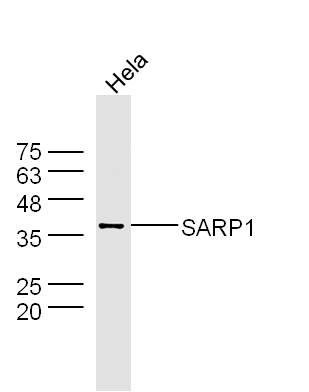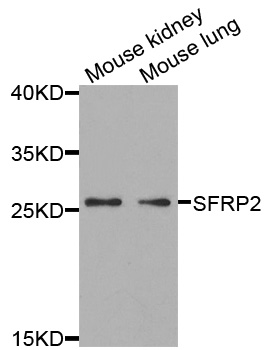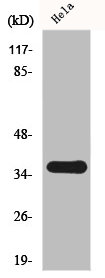SFRP2 antibody [C2C3], C-term
GTX111892
ApplicationsImmunoFluorescence, Western Blot, ImmunoCytoChemistry, ImmunoHistoChemistry, ImmunoHistoChemistry Paraffin
Product group Antibodies
ReactivityHuman, Porcine
TargetSFRP2
Overview
- SupplierGeneTex
- Product NameSFRP2 antibody [C2C3], C-term
- Delivery Days Customer9
- Application Supplier NoteWB: 1:500-1:3000. ICC/IF: 1:100-1:1000. IHC-P: 1:100-1:1000. *Optimal dilutions/concentrations should be determined by the researcher.Not tested in other applications.
- ApplicationsImmunoFluorescence, Western Blot, ImmunoCytoChemistry, ImmunoHistoChemistry, ImmunoHistoChemistry Paraffin
- CertificationResearch Use Only
- ClonalityPolyclonal
- Concentration1.12 mg/ml
- ConjugateUnconjugated
- Gene ID6423
- Target nameSFRP2
- Target descriptionsecreted frizzled related protein 2
- Target synonymsFRP-2, SARP1, SDF-5, secreted frizzled-related protein 2, SARP-1, sFRP-2, secreted apoptosis related protein 1, testicular tissue protein Li 170
- HostRabbit
- IsotypeIgG
- Protein IDQ96HF1
- Protein NameSecreted frizzled-related protein 2
- Scientific DescriptionThis gene encodes a member of the SFRP family that contains a cysteine-rich domain homologous to the putative Wnt-binding site of Frizzled proteins. SFRPs act as soluble modulators of Wnt signaling. Methylation of this gene is a potential marker for the presence of colorectal cancer. [provided by RefSeq]
- ReactivityHuman, Porcine
- Storage Instruction-20°C or -80°C,2°C to 8°C
- UNSPSC12352203
References
- Ledwon JK, Vaca EE, Huang CC, et al. Langerhans cells and SFRP2/Wnt/beta-catenin signalling control adaptation of skin epidermis to mechanical stretching. J Cell Mol Med. 2022,26(3):764-775. doi: 10.1111/jcmm.17111Read this paper
- Khan K, Yu B, Kiwan C, et al. The Role of Wnt/β-Catenin Pathway Mediators in Aortic Valve Stenosis. Front Cell Dev Biol. 2020,8:862. doi: 10.3389/fcell.2020.00862Read this paper






